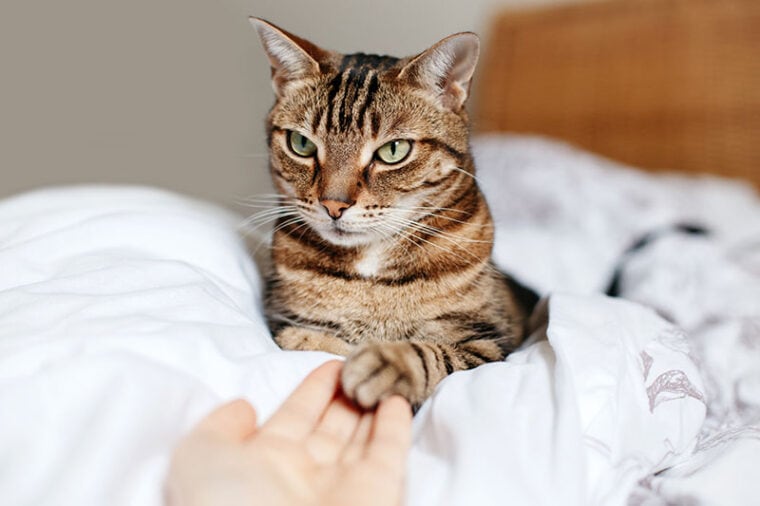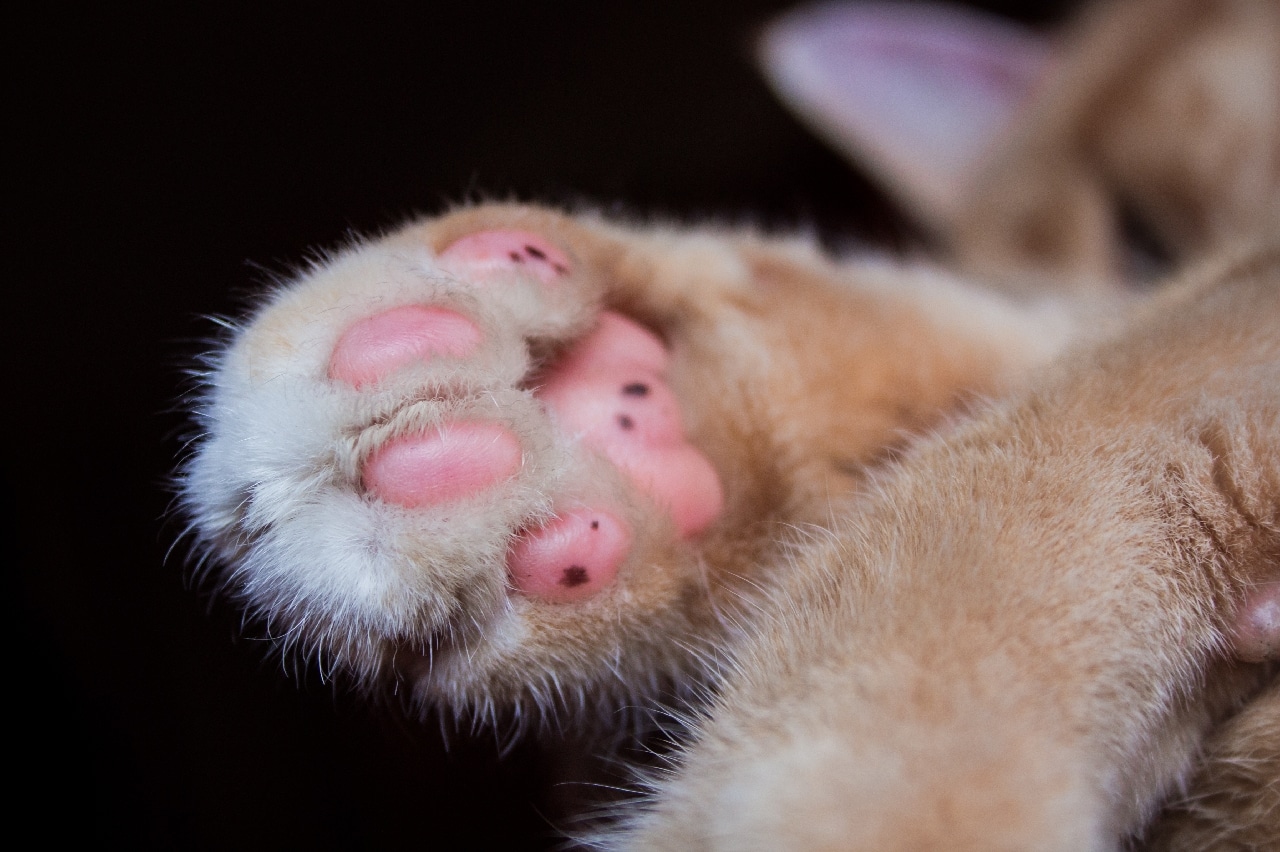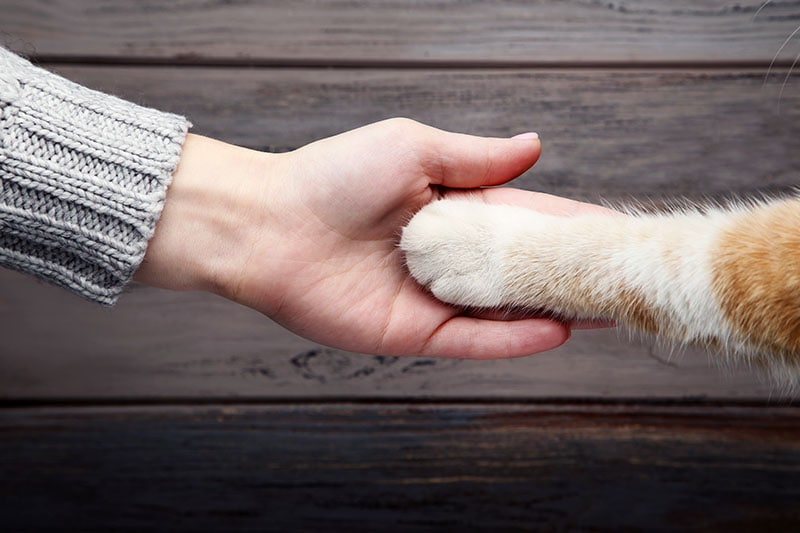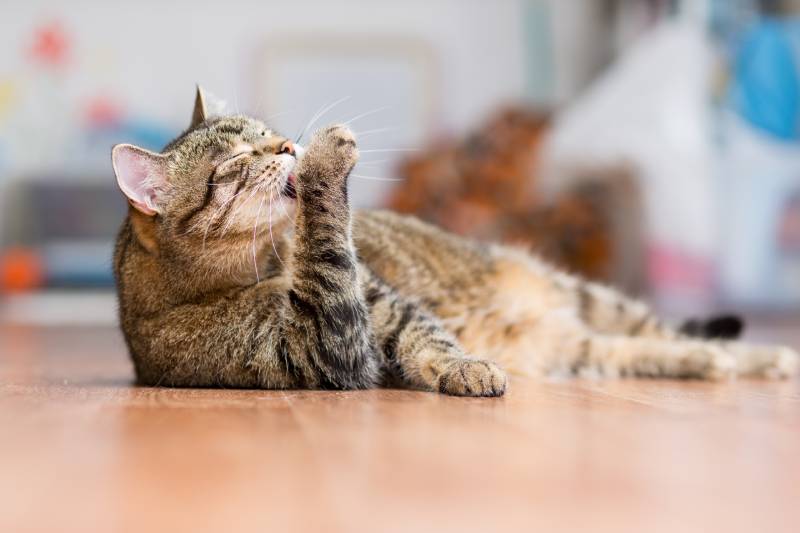
If you’re a cat owner, you may have experienced the struggle of trying to touch your cat’s paws. You may have seen your feline friend pull away or show signs of discomfort. But have you ever wondered why cats seem to be sensitive about their paws? The answer is simple! Cats don’t like having their paws touched because of the large concentration of nerve endings and sensory receptors present on their paws. This makes their paws extremely sensitive which can easily cause discomfort and pain if handled roughly.
In this article, we will explore the reasons behind this behavior and provide tips on how to properly touch your cat’s paws to keep them happy and comfortable.
Cat Paws Explained
To understand why cats may not like having their paws touched, it’s important to consider their unique anatomy. A cat’s paws are complex structures that are designed for various functions.
Each paw consists of five toes, which are used for gripping, scratching, and hunting. Cats also have sensitive paw pads that contain numerous nerve endings, making their paws highly sensitive to touch.

Cats Use Their Paws For…
Cats use their paws for a variety of purposes, including hunting, climbing, grooming, and marking their territory.
Their highly sensitive paw pads allow them to feel changes in texture, pressure, and vibrations when they walk. Because of this, cats rely on their paws to navigate their environment and engage with the world around them.
Cats are also known to be very particular about their grooming habits and spend a significant amount of time cleaning and grooming their paws. This innate behavior may make them sensitive to having their paws touched by humans.
Can You Touch Your Cat’s Paws?
While cat paws are supposed to generally be avoided, some cats are more tolerant and may even enjoy having their paws touched especially if they have a close bond with their owners. Regardless, it’s important to approach your cat’s paws with care and respect their boundaries.
As cat parents, it is important to understand that not all cats are the same. Just because one cat allows you to touch their paws does not necessarily mean that your other cat will allow you to do the same.
How to Properly Touch Your Cat’s Paws
If you’re convinced that your cat is comfortable with you touching and massaging their paws, it is still imperative that you treat them with care and respect their boundaries.
Be sure to start slowly and work your way to their paws. Start with your cat’s back, head, and other parts of the body that are more welcoming. This will help your cat feel more comfortable and relaxed before moving onto the more sensitive paws.
When touching and massaging your cat’s paws, keep your movements gentle and slow. Try not to apply too much pressure or pull on their toes to avoid discomfort and pain. Watch for signs that your cat may not be enjoying having their paws touched, such as pulling away, hissing, or growling. If your cat shows any of these signs, stop immediately and respect their boundaries.
In addition, provide verbal praise and reassurance to your cat to keep your cat relaxed. This helps your cat create the association of cat paw rubbing with a positive experience.

Signs to Look Out For
When petting your cat on their paws or any body part for that matter, it is important to monitor your cat’s behavior. You want to familiarize yourself with their preference by observing their responses when you touch their paws. There are various signs to look out for that tell you whether they enjoy it or not, so be sure to get to know your cat!
Signs That Tell You They Enjoy It
With patience and practice, some cats may come to tolerate or even enjoy having their paws touched. Here are some signs that your cat is comfortable with paw touching:
Signs of Tension
On the other hand, some cats may never feel comfortable with having their paws touched. Here are some signs that your cat may not be enjoying the experience:

The Importance of Paw Maintenance and Health
Because of how sensitive and important cat paws are in their everyday lives, regular paw maintenance is crucial for a cat’s overall health and well-being. This includes trimming nails to prevent overgrowth and curling, inspecting and moisturizing paw pads to prevent issues like cracks or dryness, early detection of injuries, and ensuring comfortable walking environments.
By using appropriate tools, being gentle, watching for signs of discomfort, and cleaning and moisturizing paw pads, cat owners can ensure their feline friends have healthy and comfortable paws for a happy and active life.
Should you find anything suspicious with your cat’s paws, it is best to consult with your local veterinarian for professional advice and management.
Other Areas to Avoid
In addition to their paws, cats have other sensitive areas on their bodies that may not be receptive to touch. These areas include their belly, tail, and ears. Cats are known to be sensitive about these areas and may react negatively if touched without their consent.
Just like their paws, some cats may allow you and even enjoy having these areas touched. Regardless of the body part, be sure to be gentle, patient, and respectful of their boundaries. It’s important to approach these areas with caution and pay attention to your cat’s body language to determine their comfort level.
Conclusion
Cats do not like having their paws touched because of the large number of sensory receptors present in the area. The highly sensitive nature of their paws can make touching uncomfortable and painful.
While some cats may be more tolerant than others, it is still best to respect their boundaries by monitoring their behavior and body language. Remember, not all cats are the same and as cat parents, we want our cats happy and comfortable!
Featured Image Credit: Anna Kraynova, Shutterstock






